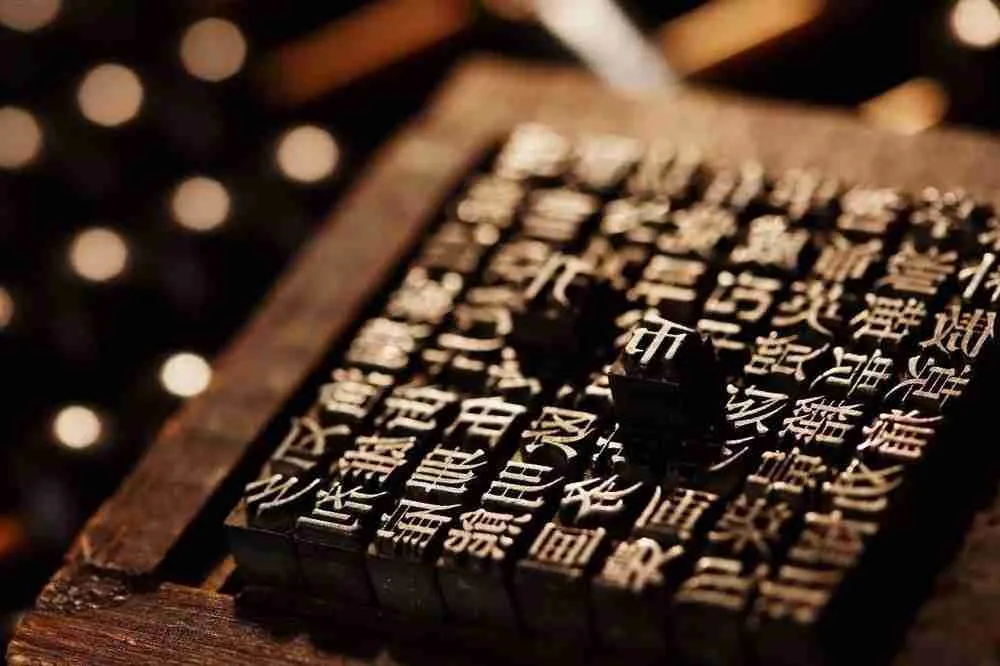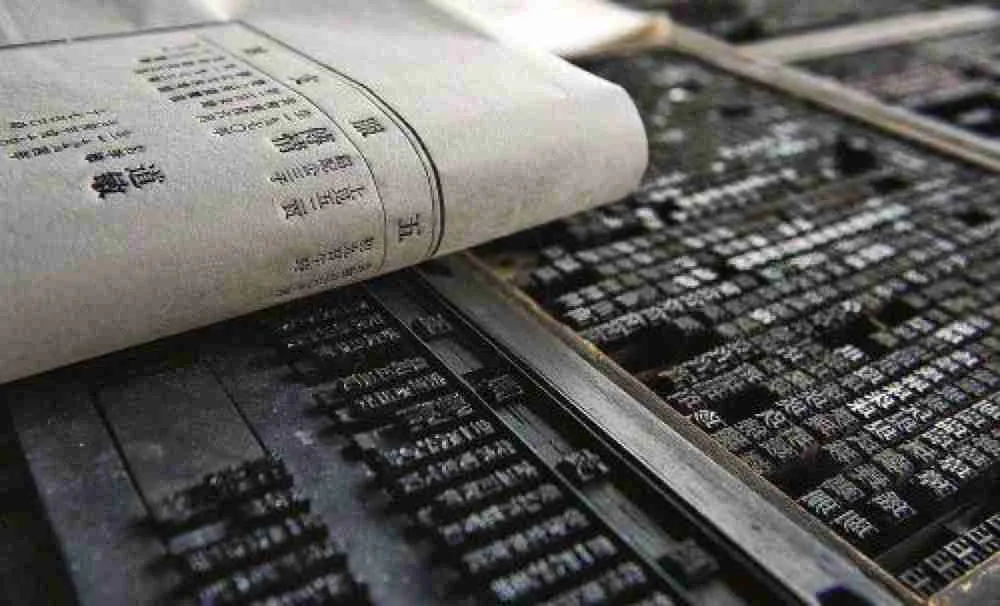Woodblock printing is an age-old tradition dating back to the 7th century AD, it happens to be among the cheapest method for producing multiple copies of images and texts. In modern society, woodblock printing has evolved to become an economic activity capable of fetching huge amounts of money but depending on the rarity of the images and texts, including the overall aesthetics.
What Is Woodblock Printing

Woodblock printing is the process of transferring patterns, images, and texts onto fabric or paper from a block of wood that has patterns of texts inscribed on it.
Woodblock Printing History in China
Woodblock printing is believed to have started in China, dating 4,000 years back. It is, therefore, believed that woodblock printing then spread to other parts of the world from China. Notable is that the earliest form of woodblock printing was not made on fabric but rather on a book also known as the Diamond Sutra and which is believed to have been printed at least 300 years before the printing of the Gutenberg Bible.
When Was Woodblock Printing Invented- the first existing evidence of items made from woodblock printing was the fragment of Dhāraṇī, the above was a miniature scroll which had been written in Sanskrit and was unearthed in a tomb in Xian. The scroll was written using woodblock printing in the era of the Tang dynasty.
Another scroll made by woodblock printing was also discovered known as the Saddharma Pundarika Sutra was discovered between 690 and 699. There were other woodblock prints that were created for the purpose of reading such as the Lotus Sutra which was discovered at Turpan in 1906.
There was also a discovery of some older texts that contained a specific printing date and which were discovered in the Mogao caves of Dunhuang back in 1907. The above copy of the diamond Sutra was established to be 14 feet long, it contained a colophon at the inner end. The scroll is considered as the world’s oldest woodblock scroll.
Another woodblock scroll that followed the diamond sutra closely was a printed almanac also known as the Qianfu Sinian Lishu and which went as far back as 877.
Why Was Woodblock Printing Invented- woodblock printing became common because of the influence of Mahayana Buddhism. The Mahayana believed that religious texts held intrinsic value because they carried Buddha’s word. The religious texts were therefore considered to be talismans that contained sacred power and could, therefore, be used to ward off evil spirits. The Buddhists, therefore, believed that through copying and preservation of the texts they could accrue personal merit. Given the above benefits, the Buddhists started printing in large scale and by the 7th century, they started making woodblock prints of apotropaic documents.
Important to note is that the documents recreated by the Buddhists were not to be circulated to the public but instead they were buried on consecrated ground. Woodblock printing enabled Buddhists to spread the sacred texts, through block printing the Buddhists were also able to generate a lot of wealth. And to some extent the Indian Buddhists were convinced that the Chinese Buddhists were much more superior.
How Was Woodblock Printing Invented- the texts of the book of the Southern Qi, tell the story of a man named Gong Xuanyi. And who had styled himself as Gong the sage, he had a jade seal block writing which he claimed had been given to him by a supernatural being. According to Gong Xuanyi, one did not require a brush was not needed as one was only required to blow on the paper, an action that would enable the characters to form. He went ahead and used his powers to mystify the local governor, actions that put him into problems as he later suffered the consequences. It is believed that the governor’s successor executed him.
Who invented woodblock printing? Bi Sheng is the individual credited with inventing woodblock printing. His woodblock print creations were made from Chinese porcelain in the period ranging 1041-1048. According to the books of history, Bi Sheng is a great contributor to the invention of printing. It should also be known that block printing is among the four greatest inventions in China.
What Was Woodblock Printing Used For- in ancient China, Woodblock printing was used for producing religious texts, specifically in the 7th century the Buddhists used woodblock printing to come with apotropaic documents. The Buddhist texts were printed as ritual items and were never distributed to the public.
Overtime, woodblock printing became important and the Chinese started producing books on medicine, beliefs, among other auspicious charms.
What Is Woodblock Printing Made Of- after the realization of the importance of woodblock printing, the earliest forms of woodblock prints were made of bronze or stone seals and which were later molded into clay and at times silk combined with ink and rubber to inscribe texts.
How Does Woodblock Printing Work- the art of woodblock printing as discovered by Xuanyi is not a very difficult one, given that you only need to carve an image on a block of wood in reverse. The image’s outline is then left on the wood, the block would then be inked and printed on paper or fabric. However, as much as the process might seem simple, it actually takes a lot of time so if you want to create more aesthetically pleasing prints that might require you to add a differently colored ink or if you want to add a variety of other different colors.
Why Was Woodblock Printing Important – in ancient China woodblock printing was an important practice because it enabled individuals of the Tang and Song dynasties to print and spread different texts. Over time printing was considered a form of entertainment because the texts were later on transferred to paper or silk.
In ancient times wood printing was used to spread insight, knowledge, and artistic inspiration. Woodblock printing also put China on the world map as one of the first countries to reproduce texts in huge quantities. They are thus known for having a huge repository for books and as a result, it encouraged literacy and made learning and the passing of knowledge throughout the Chinese empire easy.
How were woodblock prints made in ancient China?

In ancient China, up to four different people would be needed before a woodblock print would be produced. And that would be the publisher, designer, artist, printer, and block cutter. The publisher would then be the one to request the artist to come up with an original design. And at this point, the artist would be required to furnish the publisher with a preparatory sketch, also known as a Shita-e.
The sketch would then be traced by the block copyist also known as the Hikko, which would be transferred on thin paper. And which would then be pasted face down on the cherry wood block. The printer will then take over from here and cut through the paper while leaving out the lines that had been raised on the design, the above would then create the key block that would create the black outline that should be followed as the color blocks are being cut.
The cutter would now take over and chisel out the designs onto the block of wood, after which the woodblock would then be inked, and a key print would then be rubbed until the impression is transferred on it. The next step is for the artist to select the colors that he wants to use on the prints, from where a separate block would have to be carved for each of the chosen colors.
In most cases, up to 20 blocks would have to be carved, but in other cases up to two colors would share the same block, but also if there was enough distance between them. After the completion of the above process the blocks would then be sent to the printer, who used mulberry paper, he would rub the dyes onto the blocks and then proceed to transfer the impressions, at that time the prints would be made in sets of 200 and any additional batches would be made as their demand increased.
Images that were quite popular run thousands of copies but the good thing was that the prints were made affordable thus even middle-class individuals could afford them. Notable is that the prints also gain relevance around the world consequently becoming a source of income for the Chinese.
Conclusion
Woodblock is an age-old tradition that has been simplified and developed over the years, the technique and materials used in developing prints have also changed over the years. In ancient China, woodblock printing was famous because it helped in spreading knowledge in fabric printing.
Hello, I have a very old hand carved Chinese wood block used for printing. I have been told it was made in the very early 1200’s a.d. I would like to know more about it….what is says, who or what it is about, Approximate date made. etc. I can send you pictures of it. Would you be interested in helping me out with this? If so I will need your email address so I can send you the information I have. Thank you for your consideration. Bruce Emrich
ok, email: harreiraofficial@gmail.com
Pingback: Google